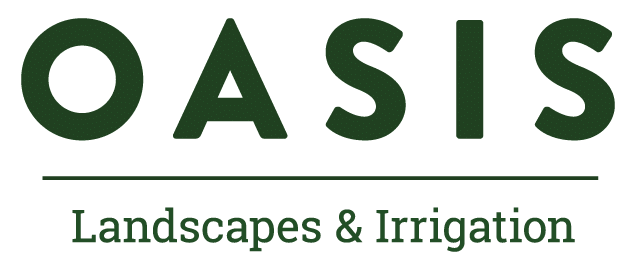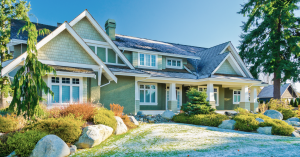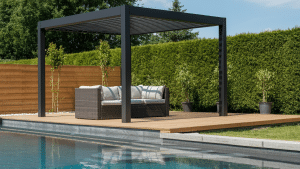Your commercial parking lot is often the first point of contact customers have with your property. A well-designed parking lot landscaping does more than provide vehicle space; it signals professionalism, enhances brand image, and offers a pleasant user experience.
Through strategic landscaping, your parking lot can become an inviting, functional extension of your business. In this article, we’ll explore ten ideas to help you elevate your commercial parking lot landscaping with both form and function in mind.
Why Parking Lot Landscaping Deserves Attention
Many business owners underestimate the impact of their parking lot’s appearance. However, a thoughtfully designed lot contributes to improved traffic flow, safety, and customer satisfaction. In some cases, it even becomes a space for relaxation or informal gatherings.
Before implementing any design elements, take a moment to consider:
- What is the primary purpose of this lot?
- Is it an outdoor lot, a covered garage, or a hybrid?
- Where are the entrances, exits, and pedestrian access points?
- Could the space serve dual purposes (e.g., outdoor events)?
- What essential features are required (lighting, security, ADA compliance)?
- What enhancements would elevate the customer experience?
By answering these questions, you can leverage these parking lot landscaping ideas for a design that is both beautiful and functional.
Core Elements of Parking Lot Landscaping Design
Before diving into specific features, it’s essential to understand five foundational principles that underpin successful landscape architecture.
1. Lines
Lines define movement and organize space. In parking lot landscaping, lines influence both traffic flow and visual guidance.
Straight lines lend a clean, modern aesthetic, while curved lines soften the environment and promote natural movement. Curved designs are especially appealing near historic buildings or luxury retail locations where aesthetic appeal is paramount.
2. Form
Form refers to the shape and arrangement of physical elements—trees, shrubs, lawns, and pathways. These features guide guests, emphasize entrances, and structure the space.
Trees can serve dual purposes: offering aesthetic value and practical shade. In densely populated areas, tree-lined curbs can significantly reduce surface temperatures and improve air quality. Choose plants that thrive in your local climate to minimize maintenance and replacement costs.
3. Texture
Adding texture brings visual interest and depth to your design. Combining various materials—such as smooth concrete, textured pavers, lush grass, or stone walls—creates contrast and sophistication.
Texture can elevate a basic asphalt lot into a space that feels more like an intentional, curated environment than a utilitarian necessity.
4. Scale
Everything should feel proportionate. Oversized planters in a tight space or tiny shrubs in an expansive lot can make the design feel awkward. Consider the relationship between natural elements and built structures when making selections.
5. Balance
Balance is achieved when design elements are evenly distributed. This doesn’t mean everything must be symmetrical—but it should feel harmonious. Balanced landscapes exude professionalism and intentionality, which reflects positively on your business.
10 Parking Lot Landscaping Ideas
With the fundamentals in mind, here are ten actionable landscaping ideas to enhance the look and function of your parking lot.
1. Evergreen Plants and Seasonal Perennials
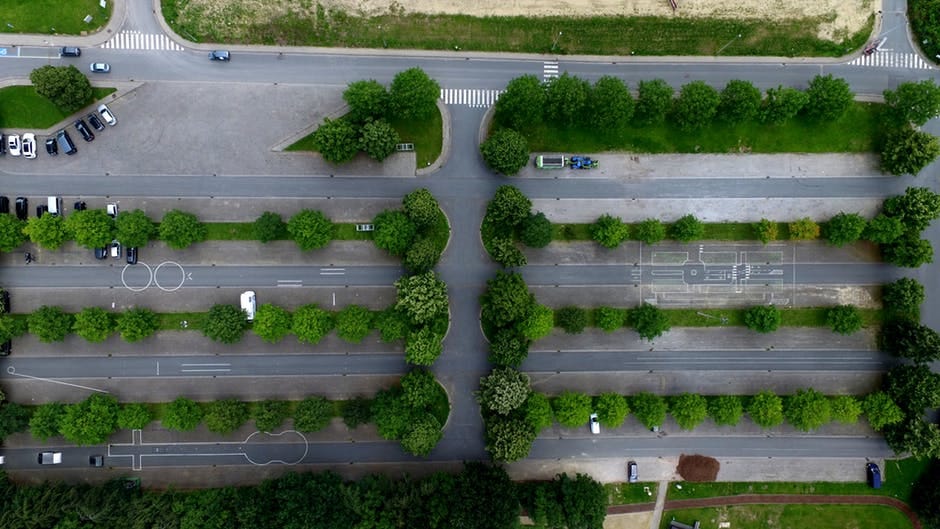
Plant life adds softness and color to hardscapes. Evergreens provide year-round greenery, while perennials offer seasonal bursts of color without the need for replanting.
Choose low-maintenance, drought-resistant varieties for lasting beauty and reduced upkeep. Local native plants are often best adapted to regional weather patterns and require fewer resources.
2. Water Features for Ambience and Brand Appeal
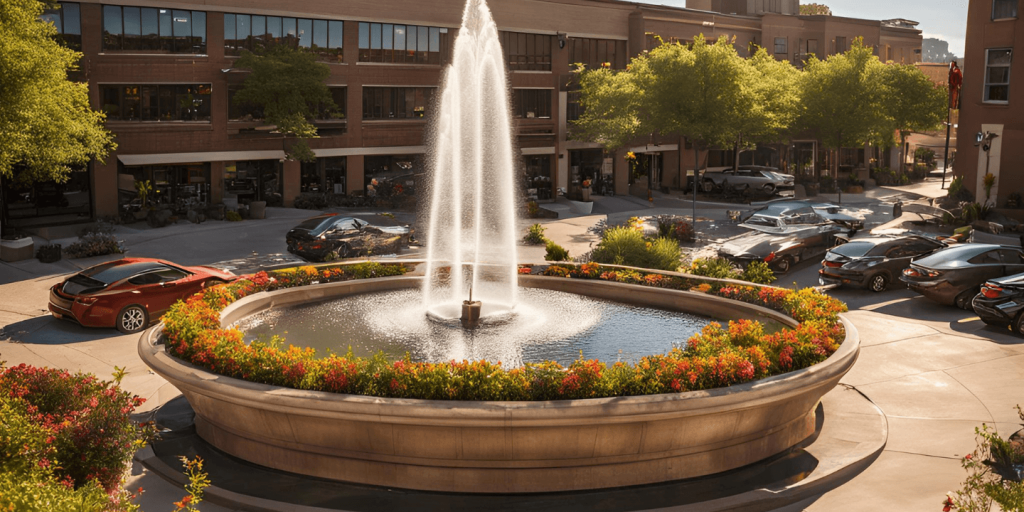
Water features offer a tranquil focal point and can reinforce your brand’s identity.
- A fountain near the entryway adds elegance.
- A birdbath introduces natural life and charm.
- A water refill station supports sustainability and caters to active families.
These features demonstrate thoughtful design and contribute to customer satisfaction, especially in warmer climates.
3. Decorative Pavers for Walkways and Borders
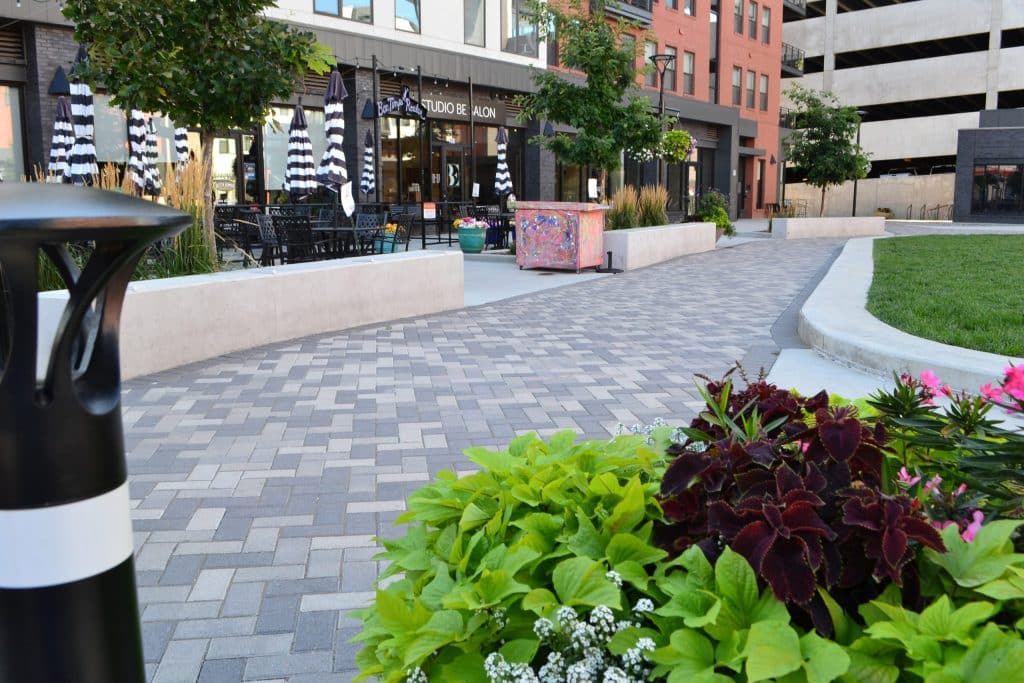
Ditch plain concrete in favor of decorative pavers to define pedestrian paths, seating areas, or garden borders. Pavers come in various shapes, textures, and colors—offering endless customization options.
Align your paver selection with your brand’s personality. A luxury retailer might opt for sleek stone, while a family-friendly business might choose bright, playful patterns.
4. Smart Drainage Solutions
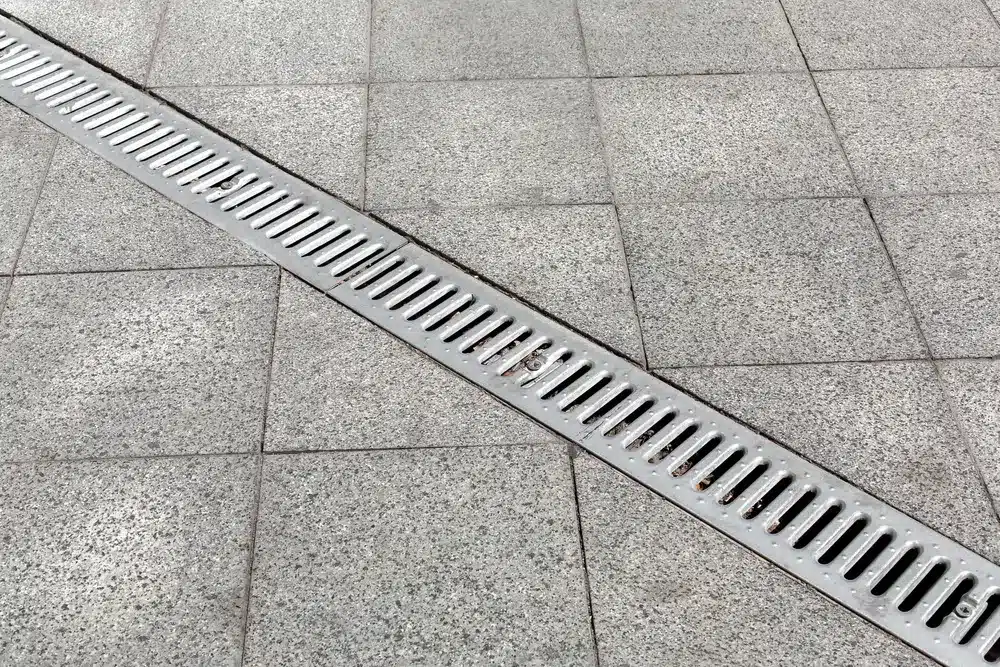
Effective drainage is vital for long-term durability. Standing water not only damages pavement but also poses a safety risk.
Design your lot with a subtle slope to facilitate runoff. Install catch basins or use permeable pavers to improve drainage and reduce water buildup. These techniques protect your investment and enhance sustainability.
5. Shade Trees and Canopies
Installing trees or structures that provide shade makes your lot more user-friendly, especially in hot or sunny regions.
- Shade keeps cars cooler and reduces heat islands.
- Canopies can highlight key areas like entrances or pedestrian crossings.
Select trees with deep root systems that won’t damage surrounding pavement. Consider native trees for better growth and lower maintenance.
6. ADA-Accessible Design
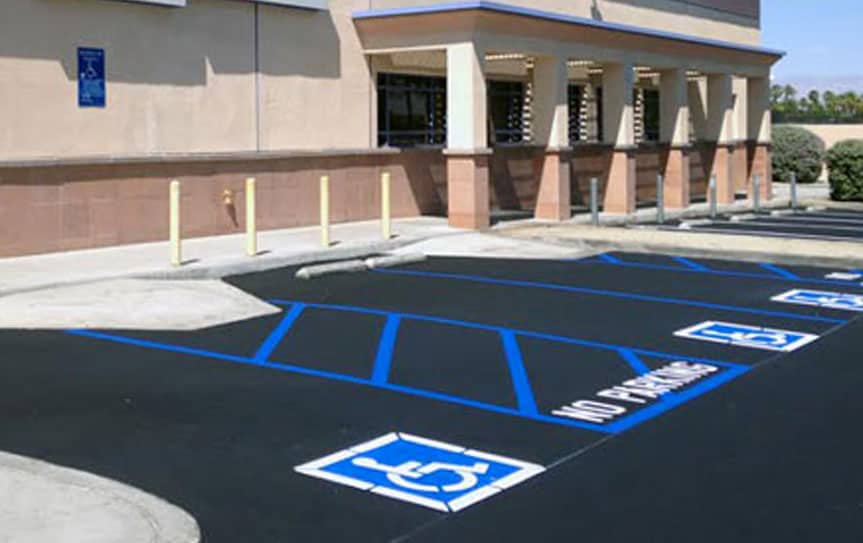
An inclusive parking lot design is both ethical and legally required. Ensure your layout includes:
- Clearly marked accessible parking spaces
- Ramps with proper slopes and handrails
- Tactile warning surfaces for visually impaired guests
Accessibility is part of a welcoming business environment. It shows that your company values all customers. Find more information at ADA.gov
7. Maintenance: Seal Cracks and Prevent Potholes
Small cracks in asphalt can turn into major issues if left untreated. Regular maintenance is key.
- Use sealcoating to protect against UV rays and water damage.
- Schedule inspections to identify problems early.
- Repair potholes promptly to maintain safety and appearance.
A well-maintained lot reinforces trust and professionalism.
8. Modern Lighting for Safety and Aesthetics
Good lighting does more than illuminate. It guides movement, enhances security, and showcases your landscaping features at night.
- Choose LED lights for energy efficiency.
- Use uplights for trees or architectural details.
- Install motion sensors or dusk-to-dawn systems for convenience and safety.
Smart lighting improves visibility while reducing electricity costs.
9. Design for Multipurpose Use
Consider how your parking lot can serve secondary functions. A flexible lot can host:
- Pop-up markets
- Community events
- Outdoor seating or dining
Use movable planters, benches, or retractable bollards to create adaptable zones that can be transformed as needed.
10. Brand Integration Through Design
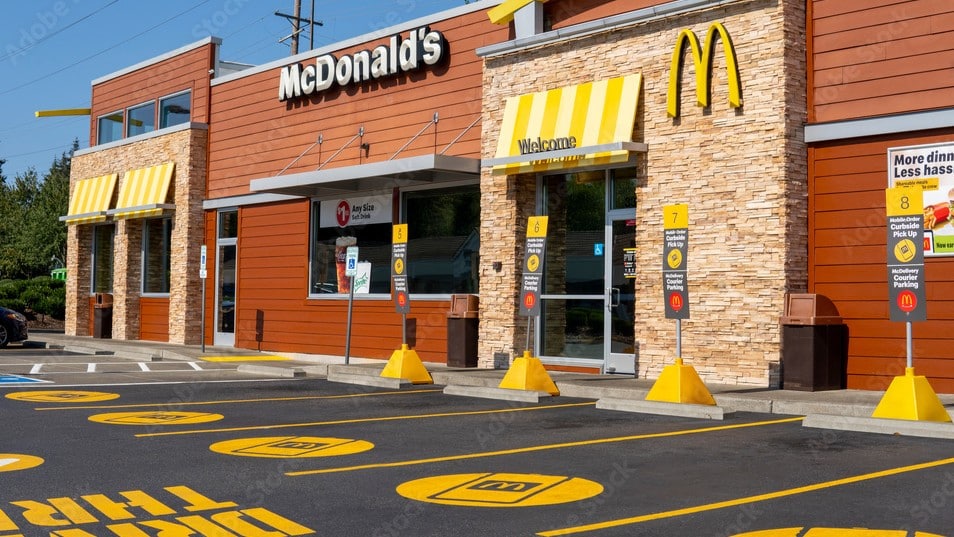
Finally, treat your parking lot as an extension of your brand. Incorporate design elements that reflect your business identity:
- Use color schemes that match your logo.
- Choose pavers, lighting, and plant selections that support your brand message.
- Install signage or murals that tell your story.
A cohesive brand experience begins before your customers walk through the door.
Conclusion
Thoughtful parking lot landscaping enhances curb appeal, improves safety, and adds long-term value to your property. By focusing on design and practical features, you can create a space that is useful, attractive, and meets your business goals.
If you are updating a lot or starting new, a professional landscaping team can help. Contact the experienced professionals at Oasis. Hopefully these 10 parking lot landscaping ideas help you maximize your investment and create a parking experience that makes a strong impression.
